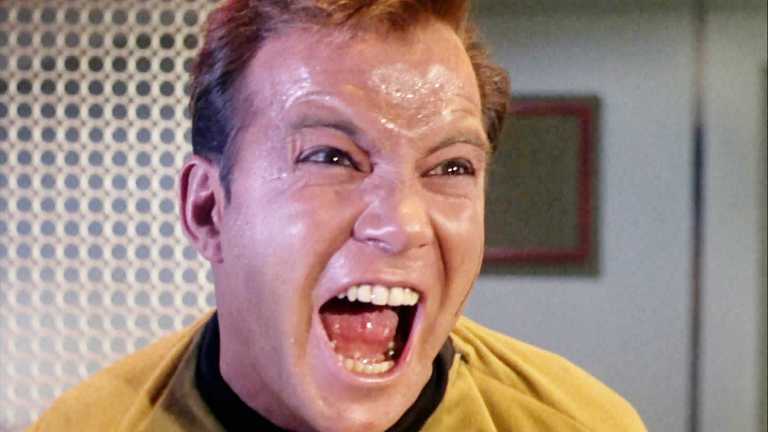Star Trek Just Brought Back a Classic Original Series Concept
It didn't involve a transporter accident, but Star Trek: Lower Decks takes the Original Series episode "The Enemy Within" to it's logical, and emotional, extreme.

This article contains spoilers for Star Trek: Lower Decks, season four, episode eight
For all of its far-flung exploration, Star Trek has always been about debates between the different aspects of humanity. Usually, that took the form of the dynamic between Kirk, Spock, and McCoy, a trio replicated in some form or another in nearly every series that followed (well, not so much Discovery; you anti-Disco folks are right about that one).
But in one of its earliest episodes, The Original Series bypassed Spock and McCoy and kept it all on Kirk. Written by the legendary Richard Matheson, “The Enemy Within” saw Kirk split into two people after a transporter malfunction. One of the Kirks, sporting the traditional yellow top, operates solely on impulse, which leads him to do things like assault Yeoman Rand and pick fights. The other Kirk, wearing a fashionable green shirt with golden highlights, treats his crew well, but cannot make a decision, even with Sulu freezing on a planet below. When Bones and Spock weigh in with their opinions, this Kirk crumbles with indecision.
Although Matheson drew from Doctor Jekyll and Mr. Hyde, he came to a conclusion very different from Robert Louis Stevenson. Stevenson’s story rejected the lofty ideas of self-improvement in the Victorian age, but Matheson’s story reframes the impulsive part of humanity as something necessary, even good.
Trek series since have played with similar ideas, but none so directly as the latest episode of Lower Decks, “A Few Badgeys More.” Despite the Sergio Leonne reference in the title, “A Few Badgeys More” refers back not to the Man With No Name, but to “The Enemy Within” and its Kirk splits.
This time, the split involves Badgey, Starfleet’s take on Clippy gone horribly wrong. When Rutherford realizes that Badgey’s heel turn occurs because it sees him as an absent father figure, the engineer gives Badgey an affirming hug. In the words of Rutherford, Badgey starts “fighting his own catharsis,” and splits into a purely evil gold Badgey and a benevolent silver being called Goodgey. Episode writer Edgar Momplaisir goes one step further from “The Enemy Within” by having Badgey separate one more time when Rutherford points out the fallacy in its plans, manifesting a new identity called Logic-y.
For the most part, these divisions allow the episode to do what Lower Decks does best. It plays around in the world of Star Trek, lovingly poking fun at the absurdities of the franchise. The same is true of the episode’s b-plot, in which returning evil computers Peanut Hamper and AGIMUS (the latter voiced by Trek all-star Jeffery Combs) discover the joys of being good.
But “A Few Badgeys More” further refines the point of “The Enemy Within,” veering back toward Stevenson’s contention. While the irrational, animal part of humanity may be necessary, provided it stays in check, sometimes it can take over and drive people to destructive ends. No amount of logic or morality can change that, and that’s terrifying to people who see humans as fundamentally good and progressive. To take away that irrational part is to essentially become a god, like Badgey does when it transcends at the end of the episode.
Of course, “A Few Badgeys More” doesn’t put an end to the debate. Soon, another Trek episode will offer a counterpoint and force us to contextualize earlier arguments. As humans, that’s the best we can do.
